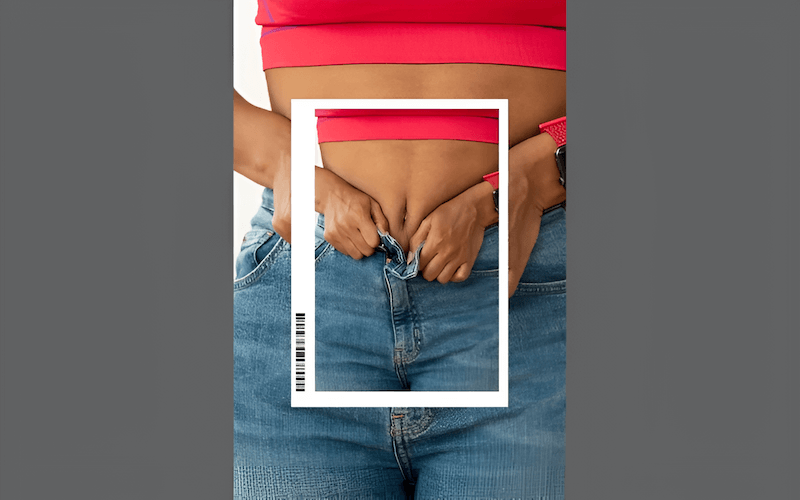Accurate Size Labels: Reduce Returns and Boost Sales
In the competitive world of fashion, clothing businesses, especially e-commerce stores, often face a silent profit killer: inaccurate sizing. This leads to a frustrating cycle of returns, disappointed customers, and ultimately, lost revenue.
This article will delve into why getting size labels right is absolutely crucial. We’ll explore the direct link between size accuracy and customer happiness, the real financial impact of sizing errors, and most importantly, a step-by-step guide to achieving and maintaining perfect size label accuracy. Get ready to learn how to build trust, reduce returns, and boost your brand’s reputation, all through the power of precise sizing.
1. Why accurate size labels are non-negotiable for your clothing brand
For any clothing brand, accurate size labels are far more than just a small detail – they’re a foundational element of success. They communicate vital information, affect customer perception, and significantly influence the overall profitability of the business. In this section, we’ll explore the reasons that precise size labels are non-negotiable for building a thriving clothing brand.
1.1 The direct link between size accuracy and customer happiness
Happy customers are repeat customers, and a key driver of customer satisfaction in the apparel industry is fit. When clothes fit as expected, customers feel good, look good, and are far more likely to be satisfied with their purchase.
First impressions: Fit as a reflection of quality
The moment a customer tries on a new garment, they form an immediate impression. A well-fitting piece of clothing signals quality and attention to detail. If the fit is off – too tight, too loose, or awkwardly proportioned – it can instantly create a negative perception, even if the fabric and construction are excellent. The fit becomes a direct reflection of the brand’s commitment to quality.

Building trust through consistent sizing
Consistency is the cornerstone of trust in the fashion world. When customers can reliably order their usual size from a brand and know it will fit, they develop confidence in that brand. This trust is invaluable. It removes the guesswork and hesitation from online shopping, encouraging customers to return for future purchases without sizing anxiety.
Encouraging repeat purchases
Accurate sizing and consistent fit are powerful engines for repeat business. When a customer has a positive experience with a brand’s sizing, they are far more likely to become loyal, returning again and again. This loyalty translates directly into increased sales and long-term growth for the brand.
1.2 The financial impact: How inaccurate sizing drains your profits
While the benefits of happy customers are clear, the negative financial consequences of inaccurate sizing are often underestimated. Sizing errors directly impact the bottom line, leading to increased costs and lost revenue.
The high cost of returns
Returns are a significant expense for clothing businesses, particularly in e-commerce. Inaccurate sizing is a major driver of returns. Each returned item incurs costs: return shipping, processing the return (labor, restocking), and often, the loss of the original sale. Statistics consistently show that a high percentage of online clothing returns are due to fit issues.
Missed sales opportunities due to sizing uncertainty
Sizing uncertainty can prevent sales even before a purchase is made. When customers are unsure about the fit of a garment, they may hesitate to buy it. This hesitation is particularly common in online shopping, where customers can’t physically try on the clothes. This leads to abandoned shopping carts and lost revenue.

The hidden costs of customer service (Handling sizing inquiries)
Inaccurate sizing generates a higher volume of customer service inquiries. Customers will contact the brand with questions about fit, measurements, and potential returns. Handling these inquiries requires staff time and resources, adding to the overall operational costs.
1.3 Brand reputation: The long-term effects of sizing errors
Beyond the immediate financial impact, inaccurate sizing can cause lasting damage to a brand’s reputation. In today’s connected world, customer experiences are quickly shared and amplified.
Negative reviews and word-of-mouth
Dissatisfied customers are likely to share their experiences, both online and offline. Negative reviews specifically mentioning sizing issues can spread rapidly, deterring potential customers. Word-of-mouth, both positive and negative, remains a powerful influence on purchasing decisions.
Damaged brand image and trust
Inconsistent or inaccurate sizing erodes customer trust in a brand. It creates the perception that the brand is careless or doesn’t prioritize customer satisfaction. Rebuilding trust after it’s been damaged is a significant challenge.
Difficulty attracting new customers
A negative reputation for sizing problems makes it significantly harder to attract new customers. Potential buyers may be wary of trying a brand with a history of fit issues, opting for competitors with more reliable sizing.

2. A practical guide to achieving size label accuracy
Knowing the “why” is essential, but now it’s time for the “how.” Improving size label accuracy is a multi-faceted process, but it’s achievable with a systematic approach. Here’s a practical guide to help clothing businesses get sizing right.
2.1 Understanding sizing standards and your target market
Accurate sizing begins with a deep understanding of sizing standards and the specific needs of your target audience.
Navigating US, UK, EU, and other international sizing systems
The world of sizing can be a confusing landscape of different systems. US, UK, and EU sizes all use different numerical or alphabetical designations. Understanding these differences is crucial, especially for brands selling internationally. Using conversion charts to translate among systems is a must to determine the needed labels.
| US Size | UK Size | EU Size |
|---|---|---|
| 4 | 8 | 36 |
| 6 | 10 | 38 |
| 8 | 12 | 40 |
| 10 | 14 | 42 |
Identifying your target customer’s body shapes and size preferences
Beyond standard sizing charts, it’s vital to understand the specific body shapes and size preferences of your target customer. Are they generally petite, tall, curvy, or athletic? Using diverse fit models that represent your target demographic is essential for developing accurate sizing.
The perils of vanity sizing: Finding the right balance
Vanity sizing, the practice of labeling clothes with smaller sizes than they actually are, is a controversial topic. While it might make some customers feel good initially, it can lead to long-term inconsistency and confusion.
It’s generally best to avoid extreme vanity sizing and focus on providing true-to-size, consistent fit. However, slightly adjusting sizes to better reflect the average body shape of your target customer (if data supports it) can be a valid strategy, as long as consistency is maintained.

2.2 Establishing a consistent internal sizing system
Once you understand sizing standards and your target market, the next step is to create a rock-solid internal sizing system. This system is the backbone of accurate sizing.
Creating detailed measurement specifications for each garment
Detailed measurement specifications, often called “size specs” or part of a “tech pack,” are essential. These documents outline the precise measurements for every key point of a garment (e.g., chest, waist, hips, length) for each size offered.
Implementing a standardized fit model process
Using fit models is a crucial step in ensuring consistent fit. Fit models are real people who represent your target customer’s body shape and size. By trying on garments during the development process, fit models provide valuable feedback on how the clothes fit and feel.
Conducting regular fit tests and quality control checks
Regular fit tests and quality control checks are essential for maintaining sizing consistency over time. Even after a garment goes into production, it’s important to periodically check samples to ensure they still meet the original size specifications.
Checklist: Steps for Conducting a Fit Test:
- Select a fit model that represents your target customer.
- Have the fit model try on the garment in their usual size.
- Check the fit at key points (chest, waist, hips, shoulders, length).
- Assess the overall comfort and ease of movement.
- Gather feedback from the fit model.
- Compare the garment’s measurements to the size spec sheet.
- Make any necessary adjustments to the pattern or specifications.
- Document and keep track of changes.

2.3 Choosing the right size label and placement
The final piece of the puzzle is selecting the right size label and ensuring its proper placement.
Types of size labels: Woven, printed, heat transfer, rubber
Different types of size labels offer various advantages and disadvantages:
- Woven labels: Durable, high-quality, and offer a classic look. They are often used for higher-end garments.
- Printed labels: More cost-effective than woven labels and can be used for a wide range of fabrics.
- Heat transfer labels: Applied directly to the fabric, creating a “tagless” feel. They are often used for activewear or garments where comfort is paramount.
- Rubber labels: Durable, water-resistant, and can withstand harsh conditions.
Selecting the best material for durability and comfort
The material of the size label should be chosen with both durability and comfort in mind. It should be able to withstand repeated washing and wear without fading or fraying. It should also be soft and non-irritating to the skin.
| Material | Durability | Comfort | Eco-Friendliness |
|---|---|---|---|
| Polyester | High | Good | Low |
| Cotton | Medium | High | Medium |
| Recycled Poly | High | Good | High |
| Satin | Medium | High | Low |
Optimal label placement for easy visibility and accessibility
Size label placement should be consistent across all garments for easy identification. Common placements include:
- Shirts/Tops: Back neck (center, inside collar), or side seam (near the hem).
- Pants/Skirts: Inside waistband (center back or side).
- Dresses: Back neck, side seam.
- Outerwear: Inside the neckline or along an inside facing.
The goal is to place the label where it’s easily visible to the customer without being obtrusive or uncomfortable.
3. Troubleshooting common sizing issues and maintaining accuracy
Even with the best systems in place, sizing issues can still arise. Being prepared to address these issues and maintain accuracy over time is crucial.
3.1 Addressing customer feedback and returns data
Customer feedback is an important source of information.
- Analyze returns data: Look for patterns in returns related to sizing. Are customers consistently returning a particular garment for being too small or too large?
- Collect customer feedback: Use surveys, reviews, and customer service interactions to gather information about sizing experiences. Ask direct questions about fit.
By combining returns data analysis and collecting direct feedback, patterns can be identified. This data can then be used to make adjustments to size specifications or fit model processes.
Example:
If a significant number of customers return a particular shirt style, reporting that it runs small in the shoulders, this indicates a need to revisit the pattern and potentially adjust the shoulder measurements.
Template Customer Survey:
- Did the item fit as expected? (Too Small, Just Right, Too Large)
- If the fit was not “Just Right,” please describe the issue.
- What is your usual size in other brands?
- Please provide any additional comments about the fit.

3.2 Dealing with material changes
Different fabrics have different drape, stretch, and shrinkage properties. These factors can significantly impact the fit of a garment.
- If a fabric is changed, even slightly, it’s essential to conduct a new fit test to ensure the sizing remains accurate.
- Document any adjustments to the size specifications that are needed due to fabric changes.
Supply Chain Accuracy
It’s important to keep consistency through supply chain
- Ensure clear communication with all partners in the supply chain, from fabric suppliers to manufacturers.
- Provide detailed size specifications and require adherence to those specifications.
- Conduct quality control checks at various stages of production to catch any sizing discrepancies early on.
4. Related questions
4.1 How often should I review and update my sizing chart?
It’s recommended to review and update your sizing chart at least once a year, or more frequently if you introduce new styles, fabrics, or target a different customer demographic.
4.2 What’s the best way to handle customer inquiries about sizing?
Provide a detailed size chart on your website, including key measurements. Offer prompt and helpful customer service, answering sizing questions thoroughly and patiently. Consider offering a virtual fit tool or personalized sizing recommendations.
4.3 How can I communicate my sizing information clearly on my website?
Use clear and concise language. Include a prominent link to your size chart on every product page. Provide visual aids, such as diagrams showing how to measure. Consider using a size chart that allows customers to input their measurements and receive a size recommendation.
4.4 Are there any legal requirements for size labeling in my target market?
Legal requirements for size labeling vary by country and region. Research the specific regulations for your target market to ensure compliance. This may include requirements for label content, placement, and language.
4.5 What is the difference between size labels and care labels?
Size labels indicate the garment’s size (e.g., S, M, L, or numerical sizes). Care labels provide instructions on how to care for the garment (e.g., washing, drying, ironing). Both are essential for providing customers with complete information.
Read more:
Accurate size labels are not just a small detail; they are a critical factor in the success of any clothing brand. By prioritizing accurate sizing, businesses can improve customer satisfaction, build brand reputation, reduce returns, and ultimately, increase profitability. The steps outlined in this article provide a roadmap for achieving and maintaining size label accuracy. Take action – implement these strategies and see the positive impact on your business.






















